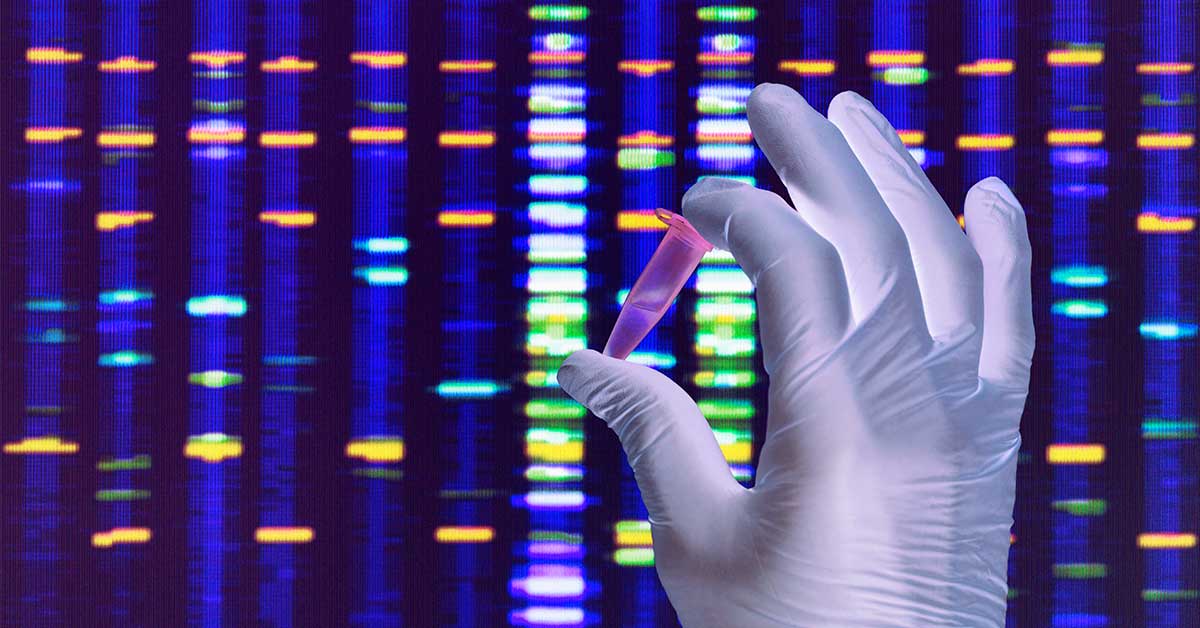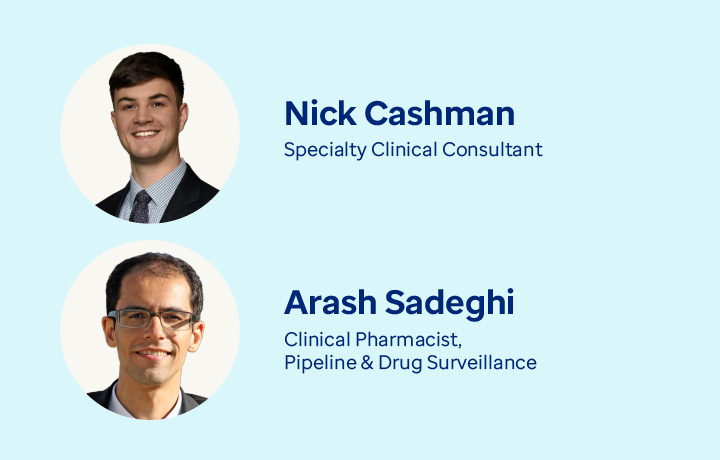Gene therapies represent a true revolution in the way certain genetic diseases are treated. They are also the most expensive drugs in history.
Optum Rx senior vice president of clinical consulting, Scott Draeger, recently spoke with Nick Cashman, specialty clinical consultant for Optum Rx, and Arash Sadeghi, clinical pharmacist, pipeline & drug surveillance at Optum Rx, about the past, present and future of gene therapies. In this episode of the Pharmacy Insights Podcast, they discuss what makes gene therapies unique as well as the strategies plan sponsors should consider to mitigate the financial risk of gene therapy claims.
Listen to the full Preparing for The Gene Therapy Era podcast episode or read the lightly edited excerpts of this timely conversation.
Gene therapies: Not just another drug class
Scott: Arash, let's start with the science behind these therapies, what are gene therapies and how do they differ from other drug classes on the market today?
Arash: It’s helpful to start with an overview of how your typical drug works. So, the typical drug such as small molecule drugs and even more complex biologic products work by interacting or binding to specific targets in your body. And those targets can range from receptors in your cells to proteins or other molecular targets. This is an oversimplification, but by interacting with these targets that are thought to be related to a disease, drugs can provide symptom relief ror alter disease-causing processes in the body.
What these drugs don't do is alter the patient’s actual genetic code. In the case of inherited diseases or genetic conditions, your standard drug isn't going to be treating the underlying cause of the disease. Also, since these traditional drugs aren't fundamentally changing a patient’s genetic code, the benefits are typically temporary. So, your typical drug has to be used continuously, or even for a patient's entire life, if it's being used to treat a chronic condition.
How does gene therapy treatment differ from drug treatment?
Arash: Gene therapy, and sometimes these are referred to as genetically modified cellular therapies, are treatments that directly modify a patient's genes or genetic code in order to treat or cure their disease. Gene therapies are usually evaluated in conditions where there is a very high unmet need and where we don't really have any other treatments currently available because your standard treatment can't treat the underlying genetic defect.
There are two major categories of genetic therapy that have been approved so far. The first are chimeric antigen receptor or CAR T cell therapies. These are used to treat certain types of cancers and the way they work is by modifying a patient's immune system by genetically engineering their T cells, which are immune cells, so that they can produce a special receptor that targets cancer cells. And when the modified T cells interact with these cancer cells, they activate an immune response, which can lead to the destruction of a patient's cancer cells. So, that's kind of one big bucket of gene therapies.
The second category, which is what most people probably think of when they think of gene therapies, are the non-oncology gene therapies that are used to treat diseases caused by genetic defects. Genetic defects can lead to a lack of production or a mutated version of important proteins in the body. The way your traditional gene therapy works is usually by gene addition. It basically provides a patient a functional copy of a gene so that they can produce their own proteins or enzymes. There are a lot of different delivery techniques for this, but the most common is using some type of viral vector or carrier to deliver the gene to a patient’s cells.
A great example of this difference between your more standard type of drug treatment versus gene therapy is how we treat hemophilia B. So, hemophilia B is a rare genetic bleeding disorder. It's caused by a deficiency of clotting Factor 9, which is a blood clotting protein. Historically, the standard of care has been factor replacement therapy. This is basically giving patients a synthetic form of clotting factor to replace their missing or deficient factor. And these patients typically will have to be on chronic, lifelong factor replacement to prevent bleeding episodes.
But last year, the FDA approved the first gene therapy for hemophilia B, Hemgenix®. This therapy works by introducing a functional copy of the Factor 9 gene into the patient’s cells so they can produce their own clotting factor. It’s administered as a one-time dose and the goal is to either eliminate or significantly reduce the need for patients to be on chronic factor replacement therapy.
And I think that's the key point here, that gene therapies are intended to be used as a one-time dose and the benefit is hopefully going to be sustained. The hope is that you're going see long lasting or even permanent benefits. However, that's also the great unknown with these treatments because we just don't have enough long-term data to know how long these treatments really provide benefit to patients.
How has the market evolved since the first gene therapy?
Scott: Arash, the first gene therapy was approved in 2017. From your perspective, how has the market evolved since then?
Arash: I think a couple of things really have changed from where we were in 2017 to where we are now.
First, most gene therapies that were initially approved in those first few years were CAR T cell therapies for cancer. If you look at 2017 to 2021, we had 5 CAR T therapies approved compared to just 2 kinds of true gene therapies for genetic diseases. Those 2 were Luxturna®, which was approved in 2017 for a very rare genetic eye disease. And then in 2019, we got Zolgensma®, which was approved for spinal muscular atrophy, which is a rare neuromuscular disease.
CAR T therapies have a lot of similarities with other gene therapies, but they are substantially less expensive. They cost about $400,000 to $500,000 for a single treatment. In a vacuum this is very, very expensive. But it's still a fraction of the cost for a gene therapy for a rare disease.
Over the last couple years, and really over the last 12 months, that balance has shifted. In 2022, we saw the beginning of what we anticipate being a wave of gene therapy approvals for rare diseases. We had 3 approvals in late 2022 and then we’ve seen 3 more gene therapies approved for rare diseases this year already. So, we went from 2 of these true gene therapies in 2017 to now having 8 of them. By comparison we've only had one additional CAR T therapy for cancer that's been approved in the last 2 years.
The other evolution I would say has been around costs. I mentioned CAR T cell therapies are less expensive relative to true gene therapies. Yet, even among the non-oncology gene therapies, there's been a real shift in terms of cost. When Luxturna was approved, that was $850,000 for a single treatment course. When Zolgensma was approved in 2019, the cost was $2.1 million. And at the time, that was the most expensive drug ever approved. But today, looking at the gene therapies that have been recently approved, they all hover around about $3 million. For example, Hemgenix is $3.5 million, which is currently the most expensive product in history.
So, there's been a real increase in price for gene therapy products that probably exceeded even what most of us thought was going to happen for these drugs we all anticipated to be expensive. Even relative to our expectations, they ended up being even more expensive, at least the most recent products.
Nick: I agree with Arash. When Luxturna was approved it really represented an expansion of the applicability of gene therapies. They're no longer just focusing on the treatment of cancer. So, in my mind, it was a major turning point. Soon, the FDA started to prioritize and establish frameworks, policies, and guidance documents for gene therapy development. That put us on the path to today and into the future as well.
Accounting for genetic therapy costs
Scott: Nick, I’d like to stay with you and really kind of pick out a theme that Arash just mentioned, that's the cost of these genetic therapies. You and I spend a lot of time in the marketplace and plan sponsors are clearly concerned about what type of impact they can see with these therapies. Do we need to think differently about how we pay for gene therapies, at least in the context of how we pay for traditional drug classes today?
Nick: Absolutely. Actually, I think the logic starts even further upstream than the payment. Plan sponsors have to start thinking about how they adjust their business planning practices related to drug spend and risk modeling to better inform, analyze and predict potential gene therapy exposure. This is something that everybody needs to be doing. Now, the implications are just too high from a financial perspective. We really need to have a clear sense on this.
And to touch on the point about payment, we've seen the emergence of outcomes-based agreements, warranty type agreements with manufacturers. They represent an innovative approach and certainly promote positive outcomes for both members and the payer to some degree. But these outcomes-based agreements don't really adequately shield the plan sponsor from all of the financial risk.
The other piece that that represents a risk for plan sponsors is employee turnover. The plan sponsor may pay the one-time, catastrophic cost for a gene therapy and expect some return on that upfront investment with the improvement to the member's quality of life and maybe an offset of some ongoing chronic therapy costs. But if the employee leaves that plan sponsor for a different company or opportunity, that plan sponsor still footed the bill while another entity reaps the financial benefit going forward.
How plan sponsors are mitigating risks of gene therapy
Nick: So, how do we mitigate some of those risks? Ideally, you're able to link the price that you pay to therapeutic outcomes. We've got the mechanism to do that through outcomes-based agreements, and contracts with manufacturers. One unknown I will touch on is that we're still figuring out how we're going to reliably collect data to inform those outcomes-based agreements.
Another thing I do want to call out as an important risk mitigation option is spreading out the risk and supplanting it with monthly, predictable costs. We're seeing risk protection products entering the market and those do a much more effective job of shielding the plan sponsor from the unforeseen and potentially catastrophic claim for a gene therapy.
Scott: Nick, do we have a sense of the likelihood a plan sponsor would incur a claim for a gene therapy in any given year?
Nick: Optum has done work to model this out. As Arash touched on, we're going to continue to see these therapies come to market. When it comes to probability analysis, it certainly depends on the size of the plan sponsor. For example, for a 10,000-member group, your probability of incurring at least one gene therapy claim by 2025 could be 7%. By 2029, with expanded patient populations, it might be as high as 33%. If you're a really large group with 250,000 lives, the probability of a claim by 2025 is at 84%. Then by 2029, a 100% probability of a claim is what our model showed.
So, these risk protection products are really critical to consider. For some of the simulations we did with risk assessments, we looked at a 50,000-life group. It demonstrated significant cost avoidance after premiums and deductible payments related to gene therapy risk protection.
Scott: Those near-term probabilities you just quoted are pretty staggering, I'm sure, for plan sponsors. What advice would you have for a plan sponsor concerned about paying for gene therapies?
Nick: Yeah, I think plan sponsors should be concerned. This is a big consideration in the marketplace now. As I think about this, there's 3 hallmark points I would make.
1. Address it now: Lean on your PBM, on your consultant partners, to educate you on the risks and the strategies that you have in your toolbox to help mitigate some of this.
2. Understand risk protection policies: If you're hearing these things for the first time today, you've got some homework. Read up on these.
- Understand and be sure that the policies you are considering for your plan are comprehensive in terms of the coverage criteria.
- Make sure you've got seamless utilization management processes to prevent avoidable disruption to members and providers. Most risk protection products will define their own coverage criteria and utilization management processes in the policy that the plan must agree to use.
- Ensure the alignment of those criteria. It's critical and represents a major contingency in determining if that product is right for you. One other comment I'll make is that it's common to see pre-exclusion criteria in these risk protection policies with varying degrees of scope. It is imperative to understand these criteria and the implications that they have on member-specific coverage.
3. Temper your expectations: It's easy to categorize these gene therapies incorrectly as long-term cures for the conditions they treat. It’s probably better to view that as the exception to the rule. Depending on the product, durability of response can represent a major contingency when interpreting the potential clinical and economic value.
Additional considerations for the future of genetic therapy
Scott: Arash, I'd like to conclude our discussion today with a question for you. As a member of our pipeline and drug surveillance team, you're the guy with the crystal ball. Let's take a look ahead. What does the future look like for gene therapies?
Arash: Just looking at the immediate term, what's going to generate a lot of attention will happen in December 2023, when we have 2 highly anticipated FDA approval decisions for gene therapies for sickle cell disease. We have lovotibeglogene autotemcel (lovo-cel) from Bluebird Bio and exagamglogene autotemcel (exa-cel) from Vertex Pharmaceuticals and CRISPR Therapeutics.
This is notable because sickle cell is the largest disease state that will actually have a gene therapy available. Sickle cell disease effects over 100,000 people in the US, which is still a rare disease. But if you compare it to other diseases that have gene therapies, it's much more common than your typical gene therapy.
I will say that that number is a little bit misleading. Of that 100,000 people, only a small percentage of patients with the disease will be eligible for treatment because you have to meet certain criteria in terms of severity of disease, age and other things. So, it's probably around 10 to 15% of that overall population who are eligible. Still, that’s a large population relative to other gene therapies that have come to market where they may be treating less than 100 people.
The other interesting aspect of these decisions is that exa-cel is potentially the first gene therapy utilizing CRISPR-Cas9 gene editing. Gene editing is different from your traditional type of gene therapy in that as the name implies, involves modifying a patient's existing genes within their genome. Whereas, your typical gene therapy works through gene addition, where you are basically adding a functional gene to a patient's genome.
When you compare gene addition versus gene editing, both have potential advantages and disadvantages. But we do have more history with gene addition, with several gene therapies that have been approved using that technique. So, it's more of a known entity in terms of the efficacy and or maybe even more importantly, safety. CRISPR-Cas9 is just newer and so it will be really interesting to see how that review goes from the FDA. In some ways it may set the precedent for how future reviews go for other gene therapies that are utilizing CRISPR-Cas9 technology.
If you look out further into the big picture, there are potentially 10 to 15 more gene therapies that could be approved between 2024 to 2025. I mentioned earlier that we have 8 gene therapies that have been approved so far. This number could potentially double or even more in the next couple of years. Gene therapies are just going to be a growing area of the pipeline. So, I think people need to be aware of that fact that this flurry of approvals that we've had recently are not a blip. This is going to become a continuous stream of products that are going to be approved.
As Nick alluded to this earlier, individually, I don't think any of these products are going to have a significant impact or, on an individual basis, carry a huge risk. But it's really the aggregate. When you really start to see 10-15 and as they start to grow even more, that's when you start to see the potential risk that a plan may actually incur a claim for these patients.
I think what's also interesting is that there will be some competition in this space. Right now, the gene therapies that are available, they're basically a one off – you have one gene therapy that treats one disease. However, there are some conditions like sickle cell disease, beta thalassemia, hemophilia, and Duchenne muscular dystrophy, where we actually are going to start to see competition potentially. It’s always good to have multiple options from a clinical perspective. It gives us an opportunity to evaluate which product may have better efficacy or safety, but also the hope would be that maybe it brings down the net cost for these products.
Looking beyond 2025 and farther ahead, it's important to realize that gene therapies are also being studied outside of genetic diseases, outside of rare conditions. There is development for more common conditions. A great example of that is for retinal diseases. In particular, wet age-related macular degeneration or wet AMD. It's one of the leading causes of vision loss for the elderly. There are now multiple gene therapies that are in development for that disease state.
So, I think the risk that is currently present is only going to grow. Right now, it's really only for rare disease, but gene therapies could grow into addressing more common and chronic conditions. This obviously provides a great opportunity from a patient perspective. These treatments would be one-time treatments. It's also going increase the challenge to payers in terms of “how do we cover these products once they expand out beyond just rare diseases?”
Scott: Nick and Arash, I really appreciate the both of you joining our podcast today to talk about this exciting topic.
How Optum Rx is helping plan sponsors prepare for the future
Optum Rx is determined to help plan sponsors manage the risk exposure to gene therapies.
Optum Gene Therapy Risk Protection uses a risk management approach to reduce the volatility presented by catastrophic claims for gene therapies. It helps plan sponsors avoid the shock of gene therapy claims by spreading out the cost into a manageable, predictable per member per month (PMPM) fee for plan sponsors.
In addition, partnering with Optum Rx gives plan sponsors access to client-specific risk modeling. This analysis will help predict their unique gene therapy risk exposure.
Optum Rx also has proven expertise in negotiating outcomes-based contracts with manufacturers. This approach ensures the price paid for a gene therapy aligns with value delivered. This is especially important for gene therapies. As significant questions remain about their durability over time, long-term monitoring of patients is essential. Optum Rx will monitor patients for as long as 15 years to ensure the gene therapy they received is continuing to function as planned.
Related content

Gene therapy: How to prepare for a growing pipeline

Eliminating surprises in pharmacy spend




